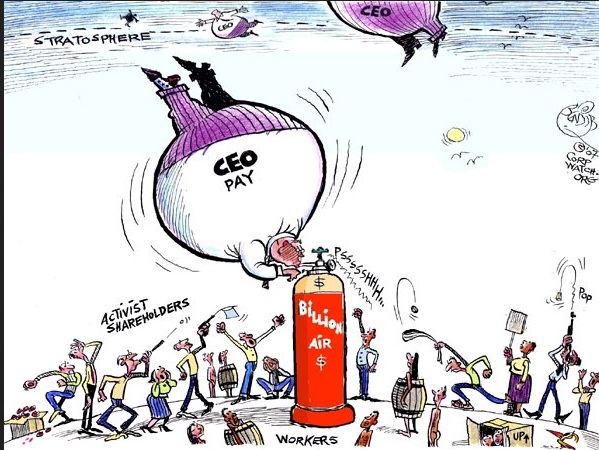Jim Lardner of Americans for FInancial Reform writes: Out-of-control compensation played a big part in the cycle of reckless lending, opaque securitizing and systematic offloading of responsibility that led to the financial and economic meltdown of 2008. In one very modest response, the Dodd-Frank Act directed banks and other public companies to reveal more about their pay practices.
More specifically, the statute said to companies: tell us how much money your CEO makes, how much your median employee makes, and the ratio of the first number to the second. It’s one of the simplest of all of Dodd-Frank’s provisions. And yet, more than four-and-a-half years after the law’s enactment, the Securities and Exchange Commission has yet to put this requirement into effect.
Investors deserve more information about pay practices, both to guard their pocketbooks against self-seeking executives and to better evaluate the long-term soundness of companies in light of evidence that runaway pay at the top inhibits teamwork and reduces employee morale and productivity.
Wall Street and the Chamber of Commerce have raised a preposterous hue and cry about the supposed burden of compiling the data. But a number of large companies have done so without difficulty. It is time – past time – for the SEC to finalize a strong pay-ratio rule, and one that includes part-time and overseas workers.
In January 2013, when Mary Jo White was nominated to lead the SEC, she pledged to make this rule a priority. Last fall, she spoke of getting the job done by the end of 2014. Now that it is March 2015, we are writing again about the pay-ratio rule. The SEC commissioners should get on with it and, once the rule is in place, to work with their fellow regulators on other legally mandated steps to combat questionable corporate pay practices.

